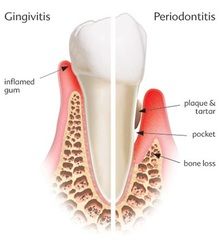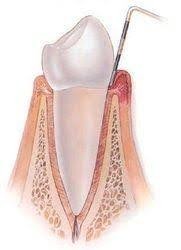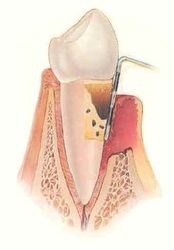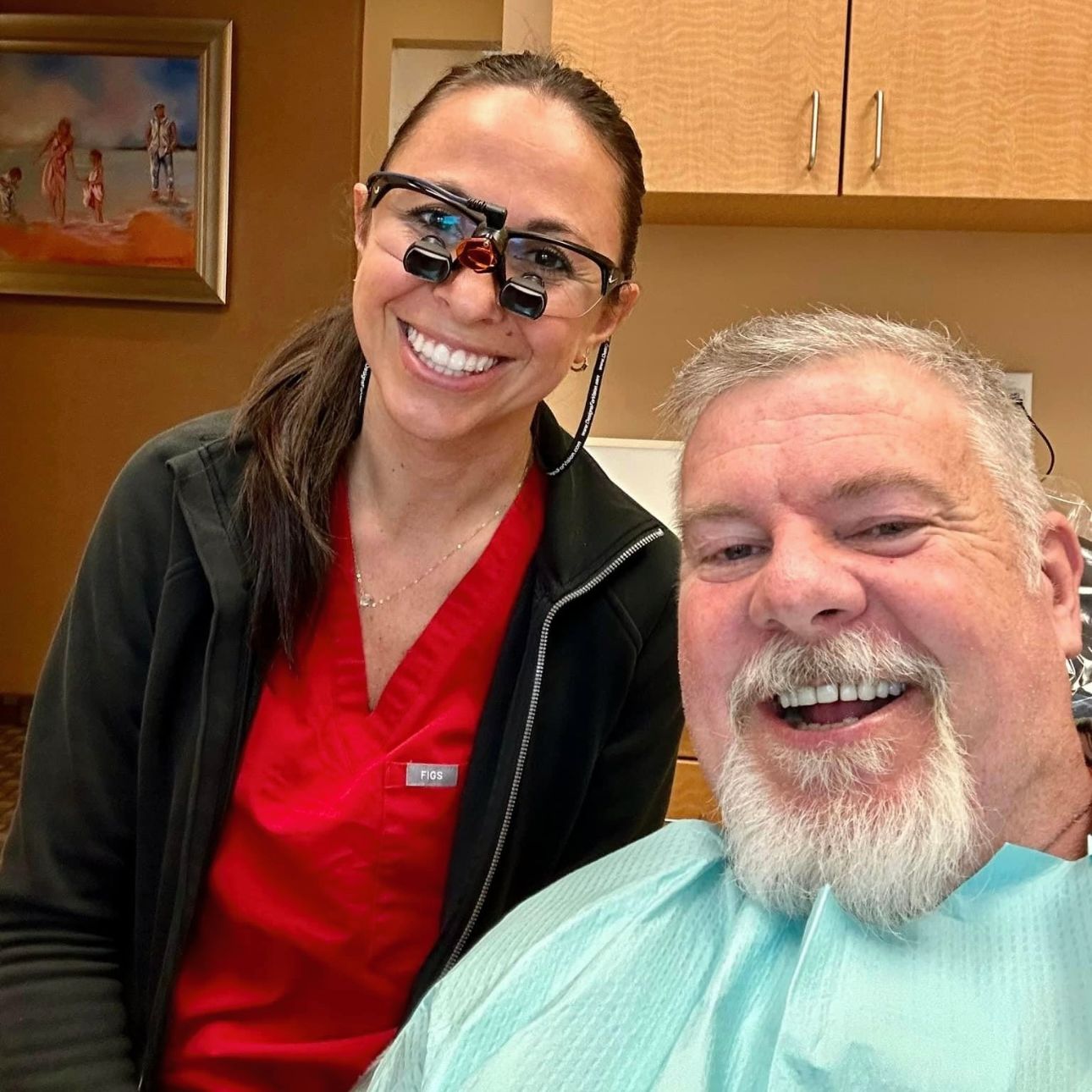Learn More About Gum Disease
Gum disease is a progressive condition caused by an infection of the gums surrounding the teeth. While at first the infection may only cause mild gum inflammation, the disease can advance through increasingly destructive stages including gingivitis, periodontitis and advanced periodontitis.
Left untreated, gum disease will eventually result in tooth loss.
Even the most mild gum disease should be treated promptly to ensure the best outcome. Removing oral plaque and calculus buildup is essential to halt progression of the disease, however the disease may not be noticeable to anyone but a periodontist.
In fact, 50% of adults in the U.S. have periodontal disease, and millions have no idea.

How does it form?
Gum disease develops when plaque is not removed from the tooth surface. The plaque produces a harmful bacteria which causes an infection in the gums. Bleeding, red or swollen gums may be the first sign.
As the surface plaque hardens into tartar, also known as calculus, the irritated gums begin to pull away from the teeth, creating a space between them called a “periodontal pocket.” Located below the gum line, the pocket exposes the tooth root and creates an area for even more plaque, tartar and bacteria to accumulate. The spreading infection will attack the soft tissue holding the tooth in place, and eventually the supporting jaw bone as well. With no structure remaining to keep it in place, the tooth will become loose and fall out.
Gum disease is a progressive condition.

Dr.Aldredge Treats Gum Disease to Save Your Teeth
Only a board-certified periodontist like Dr. Aldredge can diagnose the advanced stages of gum disease. A comprehensive periodontal exam is the first step, including the measurement of periodontal pockets.
Examining your teeth and gums and reviewing your x-rays allows him to detect damage to the gums and bone below the gum line. Dr. Aldredge will give you a thorough explanation of the results and present a plan to keep your precious teeth where they belong: in your mouth.

Stages of Gum Disease
Removing oral plaque and tartar buildup is the essential first step to halt progression of gum disease at any stage, from gingivitis to advanced periodontitis. Learn more about each stage below.

Gingivitis
- The mildest form of gum disease
- Swollen gums, red gums or bleeding gums may be present
- Minor plaque or tartar buildup
- Possible small pockets (1 -3 mm) where gums pull away from teeth.
- Often caused by poor oral health care
- Reversible with treatment
Gingivitis is treated with a thorough professional cleaning at our office, which may include root scaling. Treatment may include additional steps to cure the underlying infection.

Periodontitis
- Gum infection can cause bone and gum tissue breakdown
- Moderate to heavy swelling and bleeding
- Moderate to heavy plaque and tartar buildup
- Gingival pockets measure between 4 – 6 mm deep
- Mild to moderate bone loss.
- Loose teeth or shifting teeth are possible
Mild to moderate periodontitis is treated by cleaning plaque and calculus out of the gingival pocket. Dr. Aldredge may use root planing to smooth the tooth root, removing hiding places for tartar and allowing the gum to grow back. In other cases it may be necessary to encourage the reattachment of the gum to the tooth. LANAP laser surgery is one of the advanced techniques Dr. Aldredge uses for this task. Depending on the progression of the disease, periodontitis may be treated with gum tissue grafts and bone grafts.

Advanced Periodontitis
- Very severe periodontal pockets measure 7 mm deep or more
- Gums may have receded to the very ends of the tooth roots
- Moderate to severe bone loss
- Gums and bone may no longer be able to support teeth
- Loose teeth or tooth loss
- Antibiotics may be prescribed to treat gum infection.
Treatment of advanced periodontitis depends on how far the disease has progressed. Severe disease necessitates the regeneration and reattachment of bone and tissue that have been destroyed by infection. Common procedures to restore tooth support are gum tissue grafting and bone grafting. Dr. Aldredge also offers the advanced LANAP laser surgery technique to clear the pockets and encourage natural reattachment.



